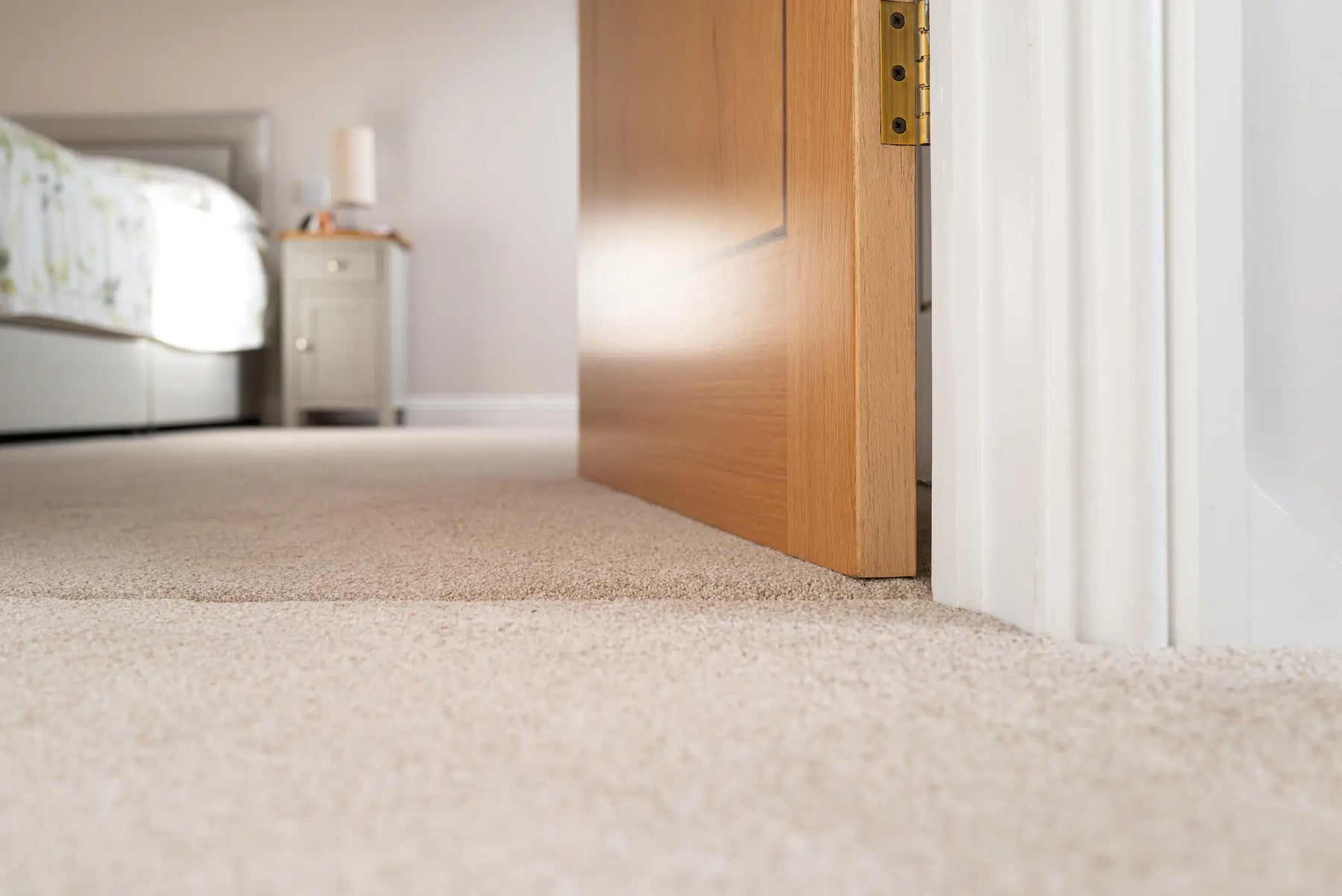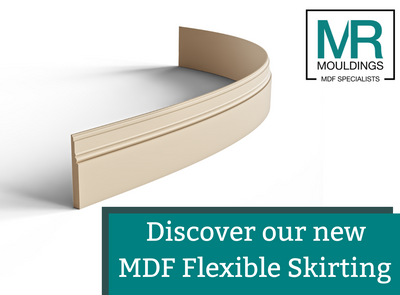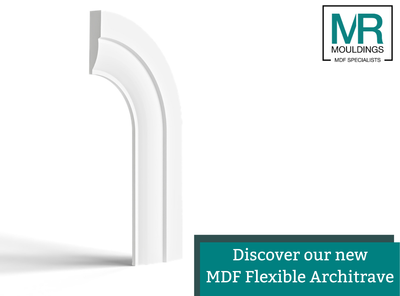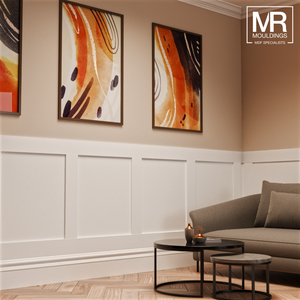
What is a Door Lining? Everything You Need to Know About Internal Door Frameworks
When you’re planning a renovation, replacing interior doors, or managing a new-build project, the focus often lands on visible features like door designs, handles, or architrave profiles. But beneath those decorative details lies a crucial component that determines how your door functions and fits: the door lining.
So, what is a door lining, and why is it essential?
A door lining is the internal framework fitted into a wall opening to support an internal door. It provides a stable surface for hinges, conceals rough wall edges, and supports decorative architrave. MDF door linings are ideal for smooth finishes, lasting performance, and easy installation in modern home interiors.
A door lining acts as the backbone of an internal doorway. Without it, your doors wouldn’t close properly, your walls could crack, and your architrave wouldn’t sit flush. In this detailed guide, we’ll explain what a door lining is, how it works, and why MR Mouldings’ MDF door linings are the smart choice for modern interiors.
What Exactly Is a Door Lining?
A door lining is a frame installed within a wall opening that supports and houses an internal door. It provides the stable, square structure that a door is hinged to and ensures it opens, closes, and latches correctly.
Typically made from softwood or Medium-Density Fibreboard (MDF), door linings are essential for:
-
Mounting door hardware (hinges and latches)
-
Supporting decorative mouldings like architrave
-
Hiding rough brick or plaster edges around door openings
Unlike an external door frame, which may include a sill, weatherstrip or threshold, a door lining is designed purely for internal doors and is usually paired with architrave for a clean, decorative finish.
Key Components of a Door Lining
A standard door lining set includes:
• Jambs (Legs)
The vertical sides of the lining. These are where hinges and latch plates are fixed. Jambs must be straight and square to ensure the door hangs properly without binding or gaps.
• Head
The horizontal top section that joins the jambs. It defines the doorway height and must be level for the door to close cleanly.
• Stops
Thin strips fitted along the jambs and head, known as door stops, prevent the door from swinging through the frame and help it close flush. These are typically supplied loose and can be pinned or glued in place, depending on the door thickness.
• Architrave (Installed Over the Lining)
Not technically part of the lining, but an essential partner. Architrave is the moulding applied around the lining to cover the join between the wall and the frame, enhancing the visual finish.
Want a cohesive look? Explore our MDF Architrave Collection to match your door linings with decorative trims that suit every style.
Why Use a Door Lining?
Now that we’ve defined what a door lining is, let’s look at why it’s essential in any internal door installation.
1. Provides a Secure Framework for Internal Doors
A door lining creates the necessary structure for your internal door to operate correctly.
-
Hinges and latches are mounted into the lining’s jambs.
-
Ensures a consistent gap around the door leaf (commonly 2–3mm) for smooth opening and closing.
-
Prevents issues like sagging, binding, or rattling due to structural movement or poor alignment.
Without a true and square lining, even the most expensive internal doors will feel cheap and function poorly.
2. Covers Unfinished Wall Edges
During construction or renovation, the structural opening for a doorway is typically rough, especially in blockwork or stud walls. Plaster, timber studs, or even foam gaps around the edge need to be concealed.
A door lining:
-
Covers this messy transition
-
Provides a clean, paintable surface that joins seamlessly with walls and architrave
-
Helps prevent cracking where plaster meets structural openings
3. Protects the Surrounding Wall Structure
Internal doors are high-use features in any property. Every time someone opens, closes, or swings a door shut, force is transferred through the hinges and into the surrounding wall.
A lining:
-
Distributes that force across a larger surface area
-
Prevents wear on soft plaster corners or timber studs
-
Increases the lifespan of both the wall and the door
-
Helps avoid costly remedial work due to cracks or movement
4. Supports Decorative Trim (Architrave)
Architrave needs a flat, stable backing to sit flush and look professional. A poorly installed or inconsistent lining can make the architrave gappy, crooked, or difficult to finish cleanly.
At MR Mouldings, our MDF door linings are cut precisely to match our skirting and architrave profiles, ensuring:
-
Flush joins
-
Consistent shadow lines
-
Cleaner decorating and less filling
5. Easier to Fit and Paint
MDF door linings are:
-
Lightweight and easier to handle on-site
-
Supplied pre-primed for faster decorating
-
Free from knots, splits or resin leaks (common with softwood)
-
More stable, won’t warp, twist, or swell with moisture changes
They’re ideal for both professionals and skilled DIYers looking for speed, reliability, and a high-quality finish.
MDF vs Softwood Door Linings: What’s the Difference?
|
Feature |
MDF Door Lining (MR Mouldings) |
Softwood Door Lining |
|
Surface finish |
✅ Smooth and knot-free |
May need filling or sanding |
|
Stability |
✅ Resistant to warping & twisting |
Can move with moisture |
|
Priming required? |
✅ Pre-primed options available |
Requires full priming |
|
Cost efficiency |
✅ More affordable |
Often higher cost |
|
Sustainability |
✅ Made from recycled wood fibres |
Depends on source |
|
Moisture resistance |
✅ MR MDF as standard |
Can absorb moisture |
Conclusion: MDF is more predictable, paintable, and durable, especially in moisture-prone areas like kitchens, utility rooms, and ground floor WCs.
When Should You Replace or Install a New Door Lining?
You should fit or replace a door lining when:
-
You're installing a new internal door where none existed
-
The existing lining is twisted, damaged, or poorly fitted
-
You're switching door styles (e.g. to heavier panelled doors that need stronger support)
-
The architrave or skirting is being replaced and the current lining doesn't match
-
You’re building a new wall or partition in an extension or loft conversion
MR Mouldings’ MDF door linings come in multiple widths and thicknesses to suit most door styles and wall constructions.
Why Choose MR Mouldings for MDF Door Linings?
At MR Mouldings, we’re known for supplying precision-machined MDF mouldings across the UK. Our MDF door linings are no exception; they’re made to the same high standards and tailored for fast, reliable installation.
With MR Mouldings, you get:
-
✅ Moisture-Resistant MDF as standard
-
✅ Clean, accurate machining for easy fitting
-
✅ Pre-primed finish, saving time on-site
-
✅ Profiles compatible with our full architrave range
-
✅ UK-wide delivery and trade-friendly pricing
-
✅ Helpful customer support and product advice
Whether you’re a builder, property developer, joiner or a DIY homeowner, our MDF linings give you the quality and finish you need, without the headaches of working with natural timber.
Final Thoughts: What Is a Door Lining and Why Should You Care?
To sum up: a door lining is the structural and visual foundation for every internal door in your property. It ensures proper alignment, smooth operation, and a crisp finish while also protecting the door, wall, and surrounding decor.
By choosing MDF door linings from MR Mouldings, you’re getting a product that:
-
Performs under pressure
-
Looks great with minimal decorating effort
-
Is built to last in modern interiors
It’s one of the smartest, most effective upgrades you can make, especially when paired with matching skirting and architrave.
Ready to Complete Your Doorway the Right Way?
Whether you're installing new doors or upgrading an older home, a high-quality door lining makes all the difference.
👉 Browse Our MDF Door Linings Now
Precision-cut. Moisture-resistant. Ready to fit and finish.




